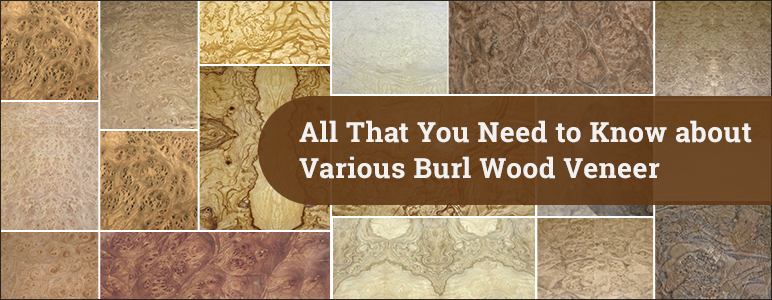Wood Veneer
All That You Need to Know about Burl Wood Veneer
Burl Wood Veneer is the finest quality of wood and the most expensive for various reasons. It is the best type of wood that people use to make furniture and interiors. Burl wood is cut from abnormal growths in knots or stumps at the base of a tree. Highly sought after and expensive especially when made into bigger sheets of paper backed veneer. The leaves have to be cut and trimmed square so this causes yield loss. Also this production method is labor intensive as there is no machine automated process available.
Burl Wood Veneer’s unique patterns and shapes often become an additional benefit while manufacturing furniture. The texture and quality make it all the more beautiful and unique. Burl wood often will have filler or plugs that are used to fill holes that are naturally occurring in the wood. When made into bigger pieces, it will have seams that are running both directions.
How Burl Grows In A Tree
A burl results from a tree undergoing some form of stress. It may be caused by an injury, virus or fungus. … Almost all burl wood is covered by bark, even if it is underground. Insect infestation and certain types of mold infestation are the most common causes of this condition.
Different Types of Burl Wood Veneer and Their Usages
There are many different types of Burl wood veneer and following is a few of the most popular.
Carpathian Elm Burl Wood Veneer
Carpathian Elm Burl is most commonly used due to the color being a medium tone and the intensity of patterns. Originating from the mountains of Carpathian Mountains in Eastern Europe. The better grades of this wood are declining and the price is increasing. There are no alternatives in color and grain.
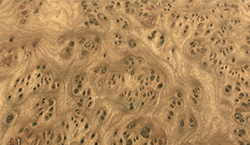
Carpathian Elm Burl
Wood Veneer
Walnut Burl Wood Veneer
Walnut Burl is dark brown tending to black. It is very popular and a close second to Elm Burl. Rich is in color and depth. Tends to not need as much filler or plugging as Elm Burl. Domestically grown mostly in California.
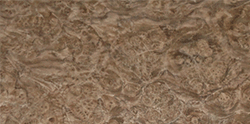
Walnut Burl Wood Veneer
Redwood Burl Veneer
Redwood Burl has a unique texture and grows mostly in California. It has a certain unique type of veining. Red in tone with lighter background.
Mappa Burl
Mappa Burl is a knotty wood that has more open grain underlying patterns. Grown form European Poplar trees. Light to beige color tone with dark knots that often require some wood filler. Less expensive that other burls generally speaking. A high contrast appearance.
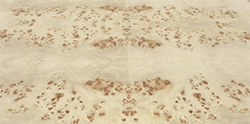
Mappa Burl
White Ash Burl
White Ash Burl is a much less descriptive and intense form of burl that is usually monotone and less complicated or busy in flow from piece to piece. White beige color tone. Nice to use a stain as an option on this wood. A low contrast burl.
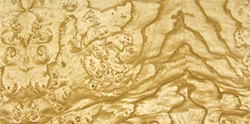
White Ash Burl
Oak Burl
White Oak Burl wood veneer is usually a little thicker cut than other burls and has a very strong grain. Not as common as others, but still very pretty.
Olive Ash Burl
Olive Ash Burl wood veneer is the most unique in the patterns it forms or creates. This wood needs careful attention to how it is laid out and planning is needed to place the patterns in the right position. Very dynamic and high contrast.
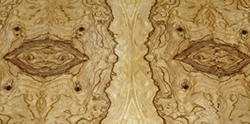
Olive Ash Burl
